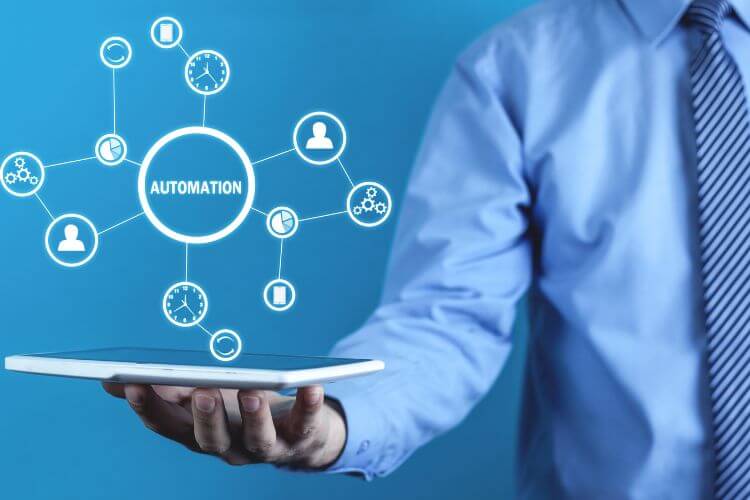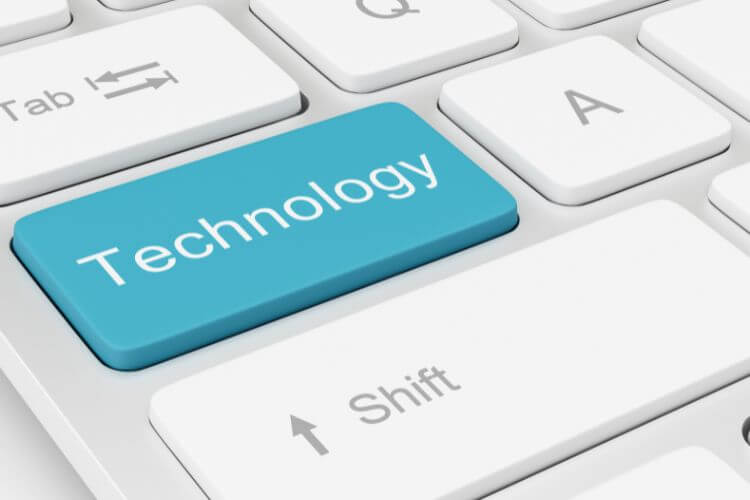In today’s competitive digital landscape, delivering seamless customer experiences is more than just a buzzword; it’s a necessity. Customers demand personalized interactions and efficient service, and businesses must adapt to meet these expectations. Enter marketing automation. By integrating automation into your customer journey mapping, you not only enhance the customer experience but also boost your conversion rates. In this guide, we’ll walk you through the process step by step.
Understanding Customer Journey Mapping
What is Customer Journey Mapping?
A customer journey map is a visual representation that details the process a customer undergoes, from initial contact to becoming a loyal advocate of your brand. It captures every interaction, also known as touchpoints, between the customer and the business.
Purpose
- Map Out Touchpoints: Document every way customers interact with your brand. This includes websites, social media, email, customer support, and in-store visits.
- Understand Customer Needs and Expectations: Gain insights into what customers expect at each stage of their journey and how these expectations influence their actions.
- Enhance Customer Experience: Identify areas for improvement to create a delightful customer experience.
Benefits
- Customer-First Marketing Approach: Put the customer at the center of your marketing strategies.
- Increase Customer Satisfaction and Loyalty: Understanding and addressing pain points enhances satisfaction.
- Inform Strategic Business Decisions: Utilize data from the map to make informed marketing and business strategy decisions.
Key Components of a Customer Journey Map
- Stages of the Customer Journey
- Awareness: Customer identifies a need or recognizes a problem.
- Consideration: Customer actively researches and evaluates different solutions.
- Purchase: The decision to buy is made.
- Retention: Post-purchase activities that strengthen the customer relationship.
- Advocacy: Customers become brand ambassadors, recommending the brand to others.
- Customer Personas: Develop detailed profiles that represent different segments of your target audience. Include demographics, behaviors, motivations, and pain points.
- Touchpoints: Each interaction between the customer and your brand, whether it’s through your website, email, or social media.
- Customer Emotions and Pain Points: Capture the emotional journey of the customer to identify frustrations and challenges at each stage.
The Role of Marketing Automation in Enhancing the Customer Journey

What is Marketing Automation?
Marketing automation involves using software to automate repetitive marketing tasks and workflows, thereby streamlining marketing efforts and improving efficiency.
Key Functions
- Automate Repetitive Tasks: Such as email campaigns, social media posts, and ad management.
- Personalize Customer Interactions: Tailor content and offers based on customer data.
- Analyze and Report: Measure campaign performance and track customer engagement.
How Marketing Automation Enhances the Customer Journey
- Personalized Engagement at Scale
Deliver targeted content based on customer behavior, increasing engagement and conversion rates.
- Seamless and Consistent Communication
Maintain consistent messaging across all channels and touchpoints, reinforcing brand identity and trust.
- Real-Time Customer Insights
Access real-time data on customer interactions to quickly adjust strategies as needed.
- Efficiency and Productivity
Reduce manual workloads, allowing marketers to focus on more strategic initiatives.
Benefits of Automating Customer Touchpoints
- Improved Customer Experience
Timely responses and relevant interactions lead to higher customer satisfaction.
- Higher Conversion Rates
Personalization encourages purchases and fosters loyalty.
- Data-Driven Decision Making
Make informed decisions based on analytics and customer data.
Step-by-Step Guide to Automating the Customer Journey

Step 1: Define Customer Personas and Map the Journey
Identify Your Ideal Customers
- Gather Data: Leverage CRM systems, website analytics, and social media to collect customer information.
- Create Detailed Personas: Define customer demographics, goals, challenges, and preferences to represent your ideal customer.
Map the Customer Journey Stages
- Outline Each Stage: Document customer goals, emotions, and questions at each stage of the journey.
- Identify Touchpoints and Pain Points: List all interactions and potential obstacles, then address any pain points noted.
Step 2: Choose the Right Marketing Automation Platform
Key Features to Look For
- Integration Capabilities: Ensure compatibility with existing systems such as CRM, CMS, and e-commerce platforms.
- Personalization Tools: Look for dynamic content creation and audience segmentation capabilities.
- Analytics and Reporting: Choose platforms that offer comprehensive insights into campaign performance and customer behavior.
Recommended Platforms
- Salesforce Marketing Cloud: Offers AI integration for advanced customer journey orchestration.
- HubSpot: Known for its user-friendly interface and robust CRM functionalities.
- Marketo Engage: Provides advanced solutions for lead management and personalized customer experiences.
Step 3: Develop Marketing Automation Workflows
Create Marketing Automation Workflows
- Outline Workflows for Each Stage: Define actions and triggers, such as sending a reminder email when a cart is abandoned.
- Build Templates and Content: Design consistent emails, landing pages, and messages that reflect your brand’s tone.
Automate Customer Journey Touchpoints
- Set Up Triggers: Automate responses based on customer behaviors like clicks or downloads.
- Implement AI-Driven Customer Journey Optimization: Use AI tools to anticipate customer needs and personalize interactions accordingly.
Step 4: Personalize Engagement Across All Touchpoints
Segmentation Strategies
- Group Customers: Using demographics, past purchases, and browsing behavior to customize marketing efforts.
- Tailor Content: Create messages tailored to each customer segment’s specific needs and expectations.
Implement Dynamic Content
- Email Marketing: Send personalized emails using customer names and purchase history.
- Website Personalization: Display content relevant to visitor interests, increasing engagement and conversion rates.
Ensure Omnichannel Consistency
- Unified Messaging: Maintain a consistent tone and offer across all communication channels.
- Coordinate Campaigns: Align marketing efforts across different teams and platforms to ensure a seamless customer experience.
Step 5: Analyze Performance and Optimize Strategies
Monitor Key Metrics
- Engagement Rates: Track opens, clicks, and conversion rates to assess campaign effectiveness.
- Customer Satisfaction: Utilize surveys, Net Promoter Score (NPS), and feedback forms to monitor satisfaction levels.
- ROI: Calculate the revenue generated versus campaign costs to determine value.
Continuous Improvement
- A/B Testing: Experiment with various elements like subject lines and call-to-action buttons to refine strategies.
- Review and Adjust: Regularly evaluate the effectiveness of campaigns and make necessary adjustments.
- Collect Feedback: Continuously gather and act on customer insights.
Best Practices and Strategies for Success

Customer Experience Automation Strategies
- Keep Interactions Human: Use conversational language and personalization to avoid a robotic feel.
- Align Teams: Facilitate collaboration between marketing, sales, and customer service teams to ensure a cohesive strategy.
- Focus on Quality Content: Deliver valuable and relevant information to attract and retain customers.
Marketing Funnel Automation Tactics
- Top of the Funnel (Awareness)
Use content marketing strategies like blog posts and social media to capture attention.
- Middle of the Funnel (Consideration)
Implement nurture campaigns that include case studies and testimonials.
- Bottom of the Funnel (Decision)
Provide special offers, free trials, or demos to encourage purchases.
Addressing Common Challenges
- Integration Issues: Select platforms that easily integrate with your existing infrastructure.
- Data Privacy Concerns: Ensure compliance with GDPR and other data protection regulations.
- High Costs and Complexity: Start with essential features and scale up as you achieve ROI.
Tools and Technologies to Consider

Top Marketing Automation Platforms
- HubSpot Marketing Hub: Combines CRM functionalities with marketing automation tools.
- ActiveCampaign: Offers email marketing, automation, and CRM capabilities.
Leveraging AI in Customer Journey Optimization
- Adobe Sensei: Provides AI-driven insights for enhanced personalization and customer experience.
- IBM Watson Marketing: Uses cognitive computing to integrate advanced analytics into marketing strategies.
Conclusion
Automating the customer journey involves integrating marketing automation with customer journey mapping to enhance personalization, efficiency, and conversions. This approach is critical for modern marketing success. Begin by evaluating your current customer journey and identifying key touchpoints for automation. Choose a suitable marketing automation platform and start small, testing and scaling your efforts as you gain insights and success.
FAQs
What is the difference between CRM and marketing automation?
CRM is focused on managing customer relationships and interactions, whereas marketing automation streamlines tasks like email campaigns and social media posts. Both systems aim to enhance customer satisfaction and engagement, but from different angles.
How can I ensure my automated interactions don’t feel robotic?
Personalize communications by using names and referencing past interactions. Maintain a conversational tone and keep optimizing based on feedback and performance.
Is marketing automation suitable for small businesses?
Absolutely. Many platforms offer scalable solutions that small businesses can start with, allowing them to focus on key areas while gradually expanding their automation capabilities.
